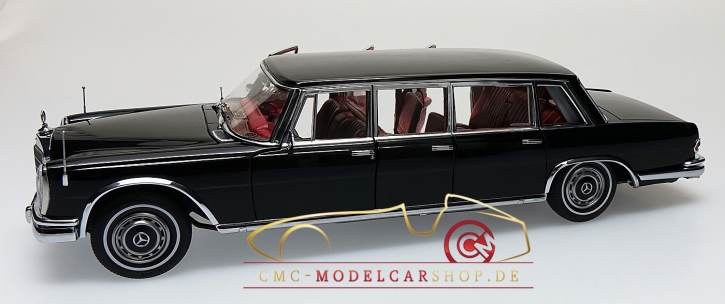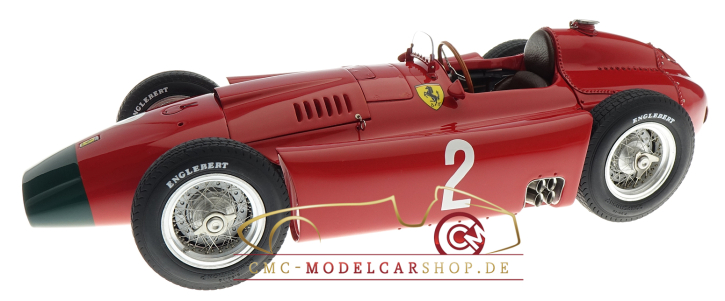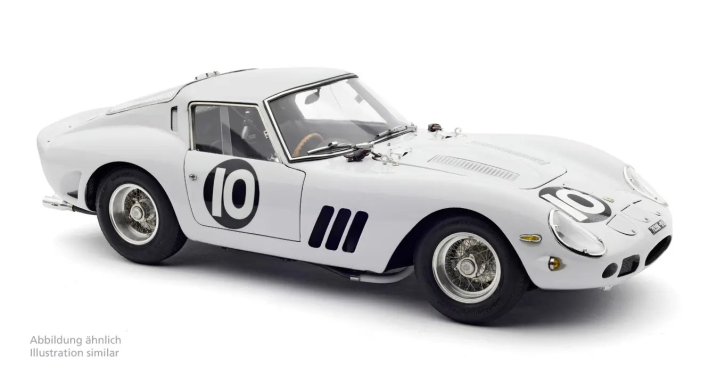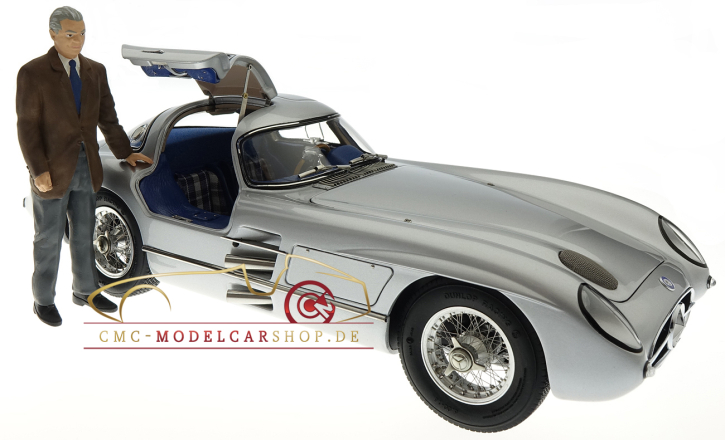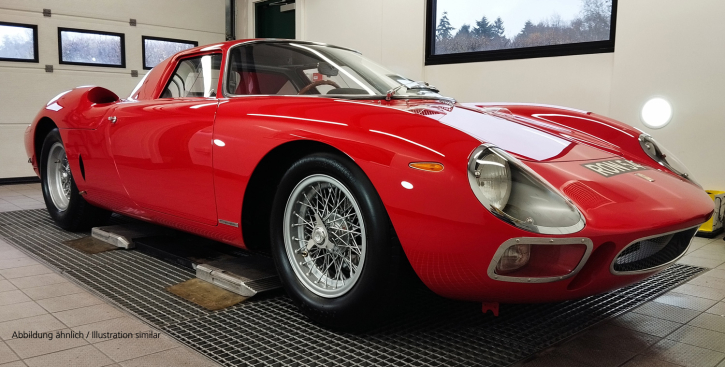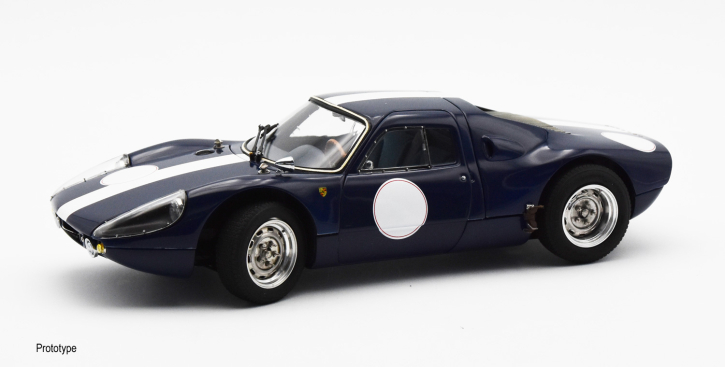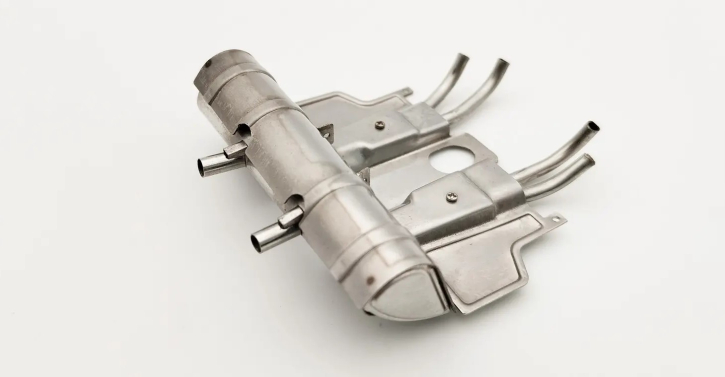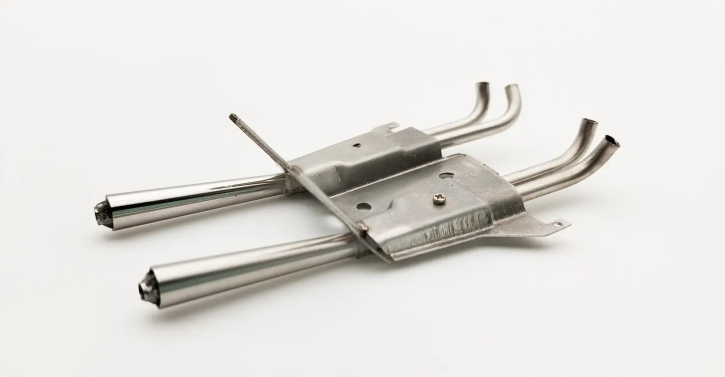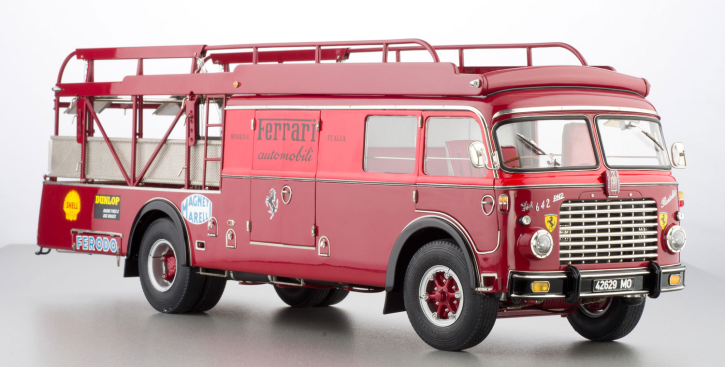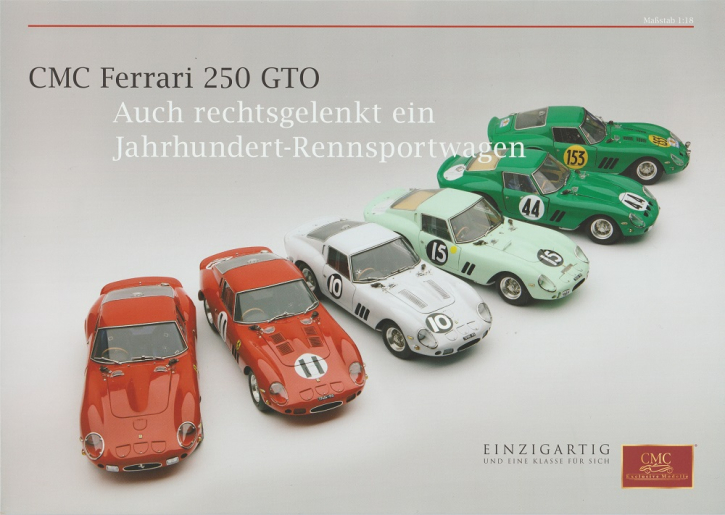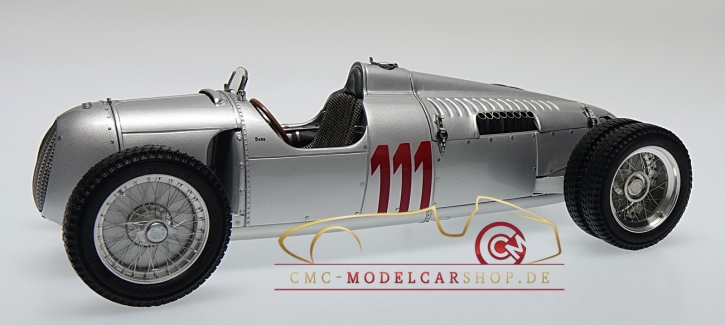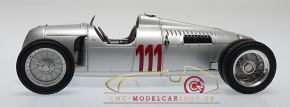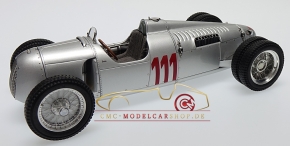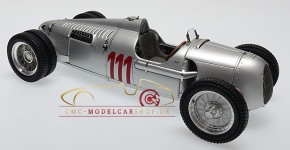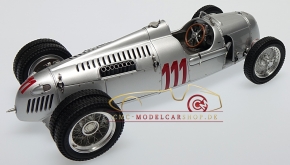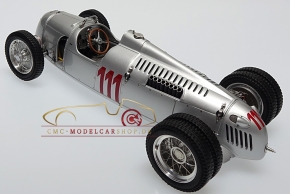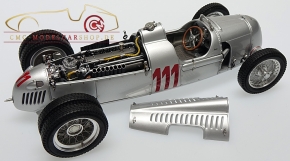product description
A masterpiece of architecture model:
CMC Auto Union Typ C Hillclimb version, 1937 Schauinsland GP Germany #111 Hans Stuck
The Auto Union Type C is hand-assembled from 1,301 parts into an extraordinary precision model. The individual parts are made of high-qualitiy materials: 23 parts are zinc die-cast, 754 are metal or copper, and 153 are made of plastic. The remaining 96 parts are screws, rivets, or simulated screw heads.
The Auto Union Type C is hand-assembled from 1,301 parts into an extraordinary precision model. The individual parts are made of high-qualitiy materials: 23 parts are zinc die-cast, 754 are metal or copper, and 153 are made of plastic. The remaining 96 parts are screws, rivets, or simulated screw heads.
Technical data of the CMC model car:
- Model: Precision model hand-assembled
- Manufacturer: CMC GmbH, Classic Model Cars, Germany
- Scale: 1:18
- Item-No.: M-162
- Single parts: 1,301
- Limited Edition: 1,500
Model details:
- Hand-assembled precision metal model, built from 1,301 single parts
- Removable front - and engine hood with real rubber O-rings for locking hooks
- Moveable windscreen
- True-to-the-original replication of the 16-cylinder V-type engine with all aggregates, pipes and cabling
- Dual exhaust system made of metal
- Crank-arm front suspension with friction-shock absorbers made of metal
- Metal rear axle with oscillation dampers
- Handcrafted radiator grill of stainless steel with a detailed cooling system and oil/fuel delivery lines
- Openable fuel tank cap made of stainless steel
- Cockpit fitted with a textile-covered driver seat and dashboard with interesting, in airplane - look designed instruments with a dominating r.p.m. counter as a round instrument
- Perfectly-wired wheels with a light alloy rim, stainless steel spokes and nipples.
- Wheels removable; tool for rearwheel central locking nut enclosed.
Schauinsland specific model equippment
- Elimination of the side-mirrors left and right
- Vertical air intake slit below the radiator grill
- Auto Union emblem (4-rings) on the front in 3D-design
- Imprint "Hans" on the outside of the cockpit on the both sides
- Twin-wheels on the rear axle, mounted with octagon-screws
- The starting number 111 in red, printed by the tampon printing method left and right on the middle of the car and also on the rear
Description of the original vehicle:
Hill climbs always offer a variety of exhilarations in motor sports. They had become very popular by the 30’s, thanks to an increasing number of Grand-Prix racecars getting involved in their races. Befittingly Auto Union held a special position, as they had an extraordinary skilled driver Hans Stuck, who was acclaimed to be "King of the Mountains" owing to his numerous hill-climbing victories.
The legendary hill-climb track at the Schauinsland Mountain near Freiburg was internationally famous. The first hill-climbing race took place there in 1925. In the following years the race grew to be an international competition, which often attracted more than 20,000 spectators during the golden era of the Schauinsland hill climbs in the 30’s.
This was very true of the 13th Schauinsland hill climb during the Grand Prix of Germany; it took place on August 1st,1937 and boasted a registration list of drivers from 10 different nations. Most noteworthy were the two top racing teams: Auto Union with Hans Stuck and Bernd Rosemeyer and Mercedes-Benz with Rudolf Caracciola, Manfred v. Brauchitsch and Hermann Lang. The race-track was 12 km long, leading all the way to the top of Schauinsland Pass with 178 turns for drivers to negotiate and an ascent of 780 meters on slopes that could be 12° uphill.
At the end of the race, Hans Stuck lived up to his nickname "King of the Mountains" and raced his Auto Union Type C with twin-tire rear wheels and starting number 111 to be the winner by using one second less than his team mate Bernd Rosemayer. The latter was also on a Type C, but with single-tire rear wheels. Mercedes-Benz didn’t have a chance that day. Rudolf Caracciola and Hermann Lang, each on a W125, finished 3rd and 4th.
Back then the drive-axle was often fitted with twin tires in order to improve the transmission of motor torque onto the road. This resulted in better traction and made it easier to control the veer-off forces in narrow hill curves. But ultimately, it was not only the engine power, but also the driving skills and, above all, the cornering technique of a pilot that were essential for winning the victory.
CMC hand-crafted metal precision model is a replica of Hans Stuck’s winning vehicle with starting number 111 and twin-tire rear wheels.
The legendary hill-climb track at the Schauinsland Mountain near Freiburg was internationally famous. The first hill-climbing race took place there in 1925. In the following years the race grew to be an international competition, which often attracted more than 20,000 spectators during the golden era of the Schauinsland hill climbs in the 30’s.
This was very true of the 13th Schauinsland hill climb during the Grand Prix of Germany; it took place on August 1st,1937 and boasted a registration list of drivers from 10 different nations. Most noteworthy were the two top racing teams: Auto Union with Hans Stuck and Bernd Rosemeyer and Mercedes-Benz with Rudolf Caracciola, Manfred v. Brauchitsch and Hermann Lang. The race-track was 12 km long, leading all the way to the top of Schauinsland Pass with 178 turns for drivers to negotiate and an ascent of 780 meters on slopes that could be 12° uphill.
At the end of the race, Hans Stuck lived up to his nickname "King of the Mountains" and raced his Auto Union Type C with twin-tire rear wheels and starting number 111 to be the winner by using one second less than his team mate Bernd Rosemayer. The latter was also on a Type C, but with single-tire rear wheels. Mercedes-Benz didn’t have a chance that day. Rudolf Caracciola and Hermann Lang, each on a W125, finished 3rd and 4th.
Back then the drive-axle was often fitted with twin tires in order to improve the transmission of motor torque onto the road. This resulted in better traction and made it easier to control the veer-off forces in narrow hill curves. But ultimately, it was not only the engine power, but also the driving skills and, above all, the cornering technique of a pilot that were essential for winning the victory.
CMC hand-crafted metal precision model is a replica of Hans Stuck’s winning vehicle with starting number 111 and twin-tire rear wheels.
Notice:
Occasionally, the wheel base of the Auto Union bolides became shortened and the fuel tank became downsized, at classic hill climb races. Original data thereto were unfortunately not available.
Technical data of the original vehicle:
- Monoposto with free-standing wheels on a tubular frame
- 16-cylinder V-engine
- 2 valves per cylinder, controlled by one overhead cam shaft
- Roots compressor
- Dry sump lubrication
- Maximum output: 520 hp at 5,000 rpm
- Displacement: 6,005 cc
- Top speed: depending from transmission / rear axle ratio
- Mixture preparation: 1 Solex horizontal dual-carburettor
- Maximum torque: 870 Nm
- Bore x stroke: 75 x 85 mm
- Wheel base: foreshortened
- Track front/rear: 1,420 mm / variable (single / twin-tire rear wheels)
- Total length: variable (foreshortened chassis)
More Auto Union from CMC Classic Model Cars













